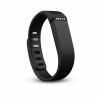Related Content
 |
Barbie Says Hello to the IoT: Perfect Match or No? Has the Internet of Things gone too far? Say “Hello, Barbie” to the first Wi-Fi connected doll. This new Barbie incorporates ToyTalk's speech recognition platform, and with Wi-Fi capabilities, her content is stored in the cloud. She also has the ability to recognize, respond, and remember. |
|
 |
What Happens When Your Mobile App Is Too Successful? As soon as your mobile application hits the store, you want your target audience to eat it up. But is it possible to have too many tapping the download button? When does success start to weigh on the developer? Read on to find out how much success is too much. |
|
 |
Mobile App Development Just Got Easier Mobile app development is becoming increasingly sophisticated with handy tools and platforms that ease the developer’s role, but mobile app development is no longer restricted to just developers. Rajini Padmanaban looks at new mobile app development tools and how development just got easier. |
|
 |
How to Keep Your Mobile App on Users’ Home Screens The average mobile user spends more than 80 percent of his time on just five mobile applications, which commonly include messaging and social media options. So, what can you do to not only get people to download your app, but also keep them interested for more than just a few hours? |
|
 |
Thanks to HTML5, Pure Native Apps Don’t Exist Just about every native app developed today includes some HTML, even if its creators are labeling it otherwise. It’s a pervasive language that’s made it hard to crown native apps as the clear winner. In reality, pure native apps are a dying breed. |
|
 |
Managing Enterprise Application Portfolios Using Cloud Marketplaces Cloud marketplaces, where customers can purchase component applications, have been around for a few years, but with an increasing interest in moving enterprise applications to cloud services, there is a new push to add features and functionality that appeal to not only their core SMB market segment. |
|
 |
FDA Won’t Regulate “Low Risk” Medical Devices It’s expected that a product such as a left ventricular assist device that helps maintain the pumping ability of a heart comes under the scrutiny of the FDA. But should wearables for healthcare that simply record heart rates and sleep cycles be regulated as medical devices? |
|
 |
Predictive Policing Is on the Rise Traditionally, technology has been used in a reactive way to address a crime after it has happened. Recently, there's been a proactive trend towards predictive policing—especially through efforts by software giants such as Microsoft—to potentially curb a crime before it even happens. |




